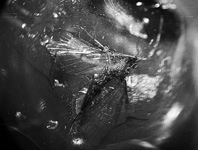Abstract
Xyleborini currently consists of more than 1168 species in 36 genera, nearly all of which were described in Xyleborus (Hulcr et al. 2015; Smith 2017). The tribe has been the focus of considerable taxonomic attention over the last decade resulting in phylogenetically based revisions and the erection of new genera (e.g. Hulcr et al. 2007, Hulcr and Cognato 2010). However in the Old World these efforts have largely been restricted to faunas of particular countries such as Taiwan (Beaver and Liu 2010), Thailand (Beaver et al. 2014), and Papua New Guinea (Hulcr and Cognato 2008). The region’s fauna was primarily described from the 1890s to the 1940s by three authors, W.F.H. Blandford, Hans Eggers and Karl Schedl. During the 1920s to the 1940s Eggers described numerous Xyleborus species from India and Myanmar (Burma), typically from single specimens or a small series, and deposited them in the Forest Research Institute (FRI) in Dehradun, Uttarakhand, India. Cotypes (paratypes), if present for the species, were kept in his collection. Upon his death, his collection was sent to the United States National Museum of Natural History but Schedl retained many of the types that are now at the Naturhistorisches Museum Wien (NHMW). In all, FRI houses 50 xyleborine holotypes, and most of these species are solely known from the holotype.
References
Beaver, R.A. & Liu L.-Y. (2010) An annotated synopsis of Taiwanese bark and ambrosia beetles, with new synonymy, new combinations and new records (Coleoptera: Curculionidae: Scolytinae). Zootaxa, 2602, 1−47.
Beaver, R.A., Sittichaya, W. & Liu, L.-Y. (2014) A synopsis of the scolytine ambrosia beetles of Thailand (Coleoptera: Curculionidae: Scolytinae). Zootaxa, 3875 (1), 1−82.
http://dx.doi.org/10.11646/zootaxa.3875.1.1Eggers, H. (1930) Neue Xyleborus-Arten (Col Scolytidae) aus Indien. Indian Forest Records, Entomology Series, 14, 177−208.
Hulcr, J. & Cognato, A.I. (2010) New genera of Palaeotropical Xyleborini (Coleoptera: Curculionidae: Scolytinae) based on congruence between morphological and molecular characters. Zootaxa, 2717, 1–33.
Hulcr, J., Dole, S.A., Beaver, R.A. & Cognato, A.I. (2007) Cladistic review of generic taxonomic characters in Xyleborina (Coleoptera: Curculionidae: Scolytinae). Systematic Entomology, 32, 568–584.
https://doi.org/10.1111/j.1365-3113.2007.00386.xHulcr, J., Atkinson, T.H., Cognato, A.I., Jordal, B.H. & McKenna, D.M. (2015) Morphology, taxonomy, and phylogenetics of bark beetles. In: Vega, F.E. & Hofstetter, R.W. (Ed.), Bark Beetles Biology and Ecology of Native and Invasive Species. Academic Press, London, pp. 41–84.
https://doi.org/10.1016/B978-0-12-417156-5.00002-2ICZN (1999) International Code of Zoological Nomenclature. 4th Edition. The International Trust for Zoological Nomenclature, London, 306 pp.
Maiti, P.K. & Saha, N. (2004) Fauna of India and the adjacent countries. Scolytidae: Coleoptera (bark and ambrosia beetles). Vol. 1. Part 1. Zoological Survey of India, Kolkata, 268 pp.
Smith, S.M. (2017) Dinoxyleborus Smith, a new genus of Neotropical xyleborine ambrosia beetle (Coleoptera, Curculionidae: Scolytinae). Zootaxa, 4303 (1), 131−139.
https://doi.org/10.11646/zootaxa.4303.1.8Wood, S.L. & Bright, D.E. (1992) A catalog of Scolytidae and Platypodidae (Coleoptera), Part 2: Taxonomic index. The Great Basin Naturalist Memoirs, 13, 1−1533.

